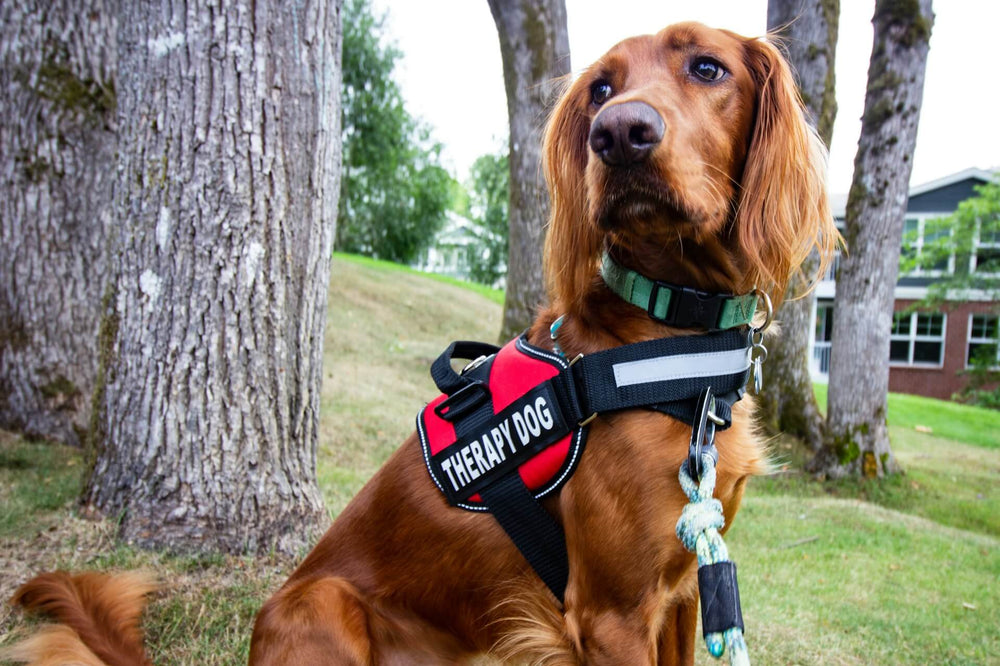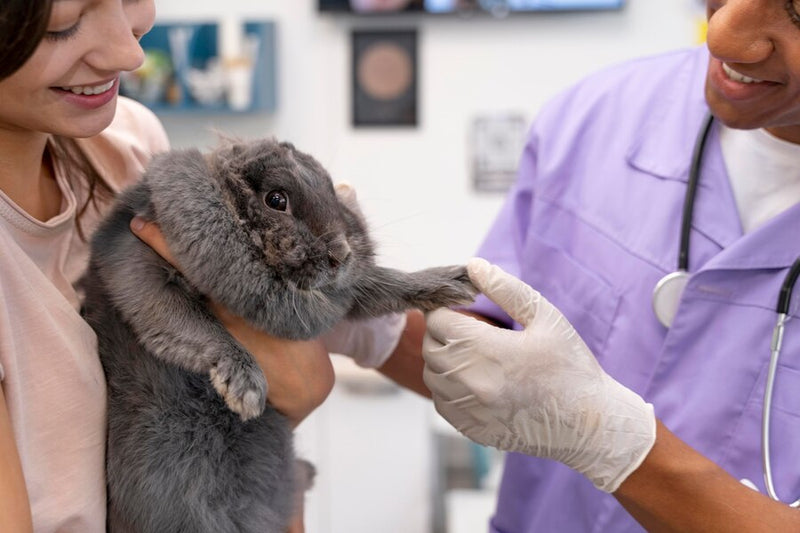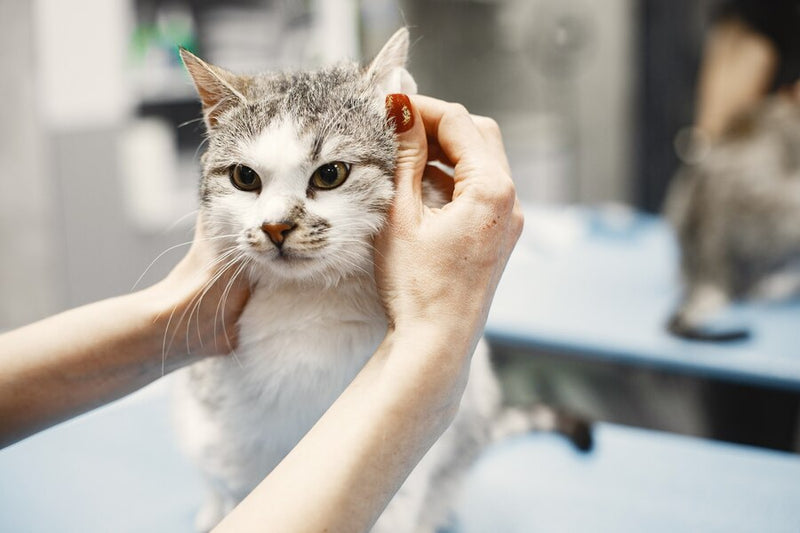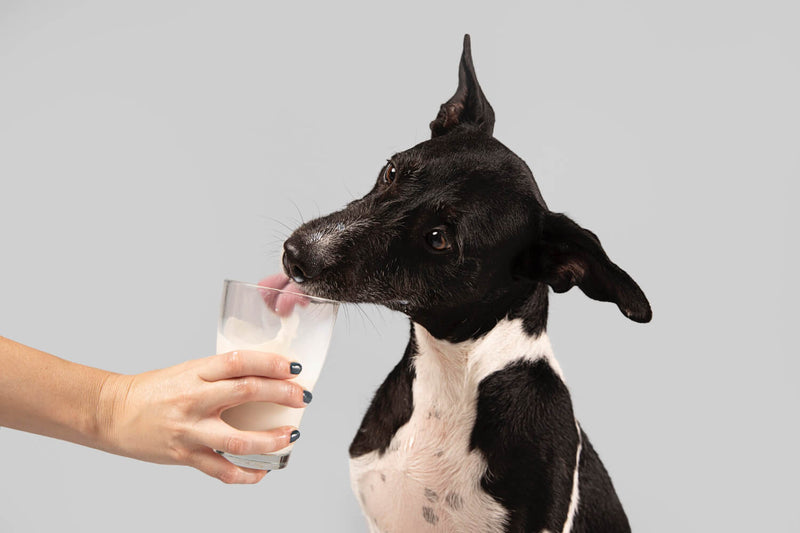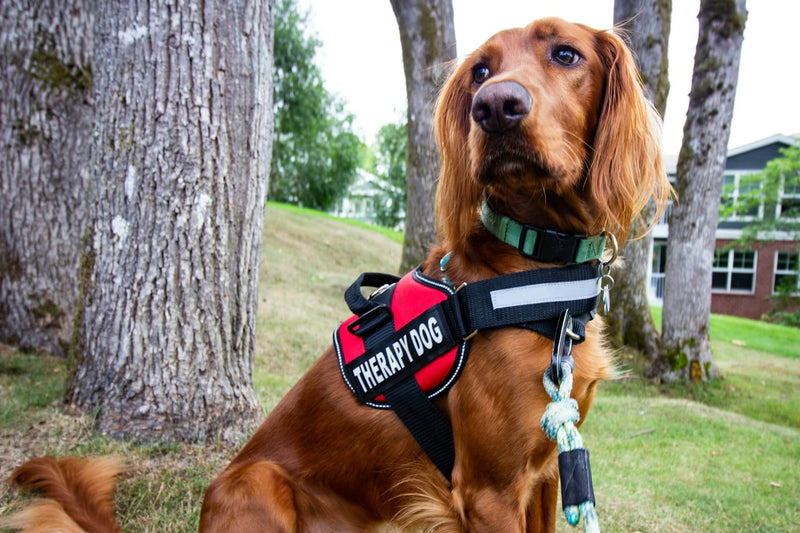
Welcome to Gritty Pet Co.
Your Canadian, specialty Pet Health & Wellness destination. 🇨🇦

Vet Reviewed & Approved
Dr. Ibrar A. is our veterinarian and a key member of our team. ✅
Animal Assisted Therapy (AAT) is a therapeutic approach that incorporates animals, such as dogs, cats, horses, birds, and even rabbits, into treatment plans to improve mental health and well-being. This innovative practice harnesses the natural bond between humans and animals to facilitate healing and emotional growth.
Key Takeaways
Start here to grasp the core benefits, who AAT helps, and how it fundamentally works.
Understanding the Benefits: Animal Assisted Therapy (AAT) can significantly reduce stress, anxiety, and depression while improving social connections and cognitive functions. Whether it’s petting a dog or engaging with other animals, AAT harnesses the power of the human-animal bond to promote mental and emotional well-being.
Who Can Benefit: AAT is versatile, benefiting people with mental health disorders, chronic illnesses, and rehabilitation needs. From elderly individuals in nursing homes to children with special needs, AAT offers tailored support to improve quality of life across various demographics.
How It Works: AAT involves specially trained animals that work alongside therapists to create a safe, comforting environment. These interactions stimulate positive brain responses, helping individuals relax, open up emotionally, and build important life skills, like empathy and compassion, making the therapy both effective and transformative.
Dive deeper to understand the ethical nuances, effectiveness, and innovative approaches shaping the future of AAT.
Ethical Considerations: The well-being of therapy animals is as important as the therapy itself. Ensuring animals are treated with respect and care, while maintaining professional boundaries and client safety, is crucial for ethical and effective therapy sessions.
Measuring Effectiveness: The impact of AAT is assessed through standardized tests, observations, and client feedback, measuring improvements in mental health, social skills, and overall well-being. These evaluations help tailor therapy to individual needs, ensuring optimal outcomes.

What are the Benefits of Animal Assisted Therapy?
Animal-Assisted Therapy offers a range of benefits. It provides emotional support, reduces stress, and fosters feelings of calmness and comfort. Interacting with animals helps build social connections, improves physical health, and stimulates cognitive function and memory recall.
Emotional Support : Interacting with animals can reduce stress, anxiety, and depression while promoting feelings of calmness and comfort.
Social Connection : Animals can serve as social catalysts, helping individuals build rapport, trust, and communication skills.
Physical Health : AAT has been linked to reduced blood pressure, improved cardiovascular health, and enhanced overall physical well-being.
Mental Stimulation : Engaging with therapy animals can increase cognitive function and stimulate memory recall, especially in individuals with cognitive impairments or dementia.
Studies have consistently demonstrated the positive impact of pets on mental health, including reduced symptoms of depression and anxiety, increased feelings of happiness and relaxation, and improved social functioning. Ongoing research continues to explore the mechanisms underlying this unique bond and its therapeutic potential.
Who Should Consider Animal Assisted Therapy
AAT can be beneficial for various groups of people:
Individuals with Mental Health Disorders : AAT can benefit those struggling with anxiety, depression, PTSD, autism spectrum disorders, and other conditions.
Individuals with Chronic Illnesses : People living with chronic illnesses, such as cancer, multiple sclerosis, or chronic pain conditions, can benefit from the emotional and physical support provided by AAT. Spending time with therapy animals can improve mood, reduce stress, and provide a distraction from pain and discomfort.
Patients in Rehabilitation : From physical therapy to substance abuse recovery, AAT can complement traditional treatment methods and accelerate the healing process.
Elderly Individuals : Nursing homes and assisted living facilities often incorporate AAT to combat loneliness, promote social interaction, and improve the quality of life for seniors.
Children with Special Needs : Children with developmental disorders, sensory processing issues, or learning disabilities can benefit from AAT. Interacting with animals can improve social skills, communication, and emotional regulation in a comforting and non-judgmental environment.
Students and Individuals in High-Stress Environments : Students, professionals, or individuals in high-stress environments can find relief and relaxation through AAT. Interacting with animals can help reduce feelings of burnout, improve focus and productivity, and promote overall well-being in demanding situations.
Diverse Therapy Pets
In Animal-Assisted Therapy (AAT), a range of animals can be used to help people feel better. Some common animals include dogs, cats, horses, birds, rabbits, guinea pigs, fish, and even reptiles. Each species offers unique therapeutic benefits, catering to diverse individual preferences and needs.
Dogs are often popular because they are friendly and make strong connections with people. Cats can be calming and comforting, while horses are big and gentle, great for those with physical or emotional challenges. Birds can be fun to watch and listen to, and rabbits and guinea pigs are cuddly and soothing. Even watching fish swim can make people feel relaxed. Some programs even use reptiles like turtles or snakes to help people face their fears.
How Animal Assisted Therapy Works?
Animal-Assisted Therapy works by bringing together humans and specially trained animals to promote wellness and healing. During AAT sessions, individuals interact with therapy animals in various ways, such as petting, playing, or simply being in their presence. Trained therapists or handlers guide interactions between individuals and therapy animals.
These interactions trigger positive responses in the human brain, releasing hormones like oxytocin and dopamine, which help reduce stress, anxiety, and depression. The calming presence of therapy animals creates a safe and comforting environment. It can help individuals relax, open up emotionally, and develop important life skills such as empathy and compassion.

Innovative Pet Therapies
Advancements in AAT include innovative approaches such as virtual pet therapy, where individuals interact with animals through video conferencing or virtual reality simulations. These emerging technologies extend the reach of AAT and provide therapeutic benefits to individuals in remote or restricted environments.
Training for Therapy Pets
Training therapy pets requires patience, dedication, and specialized skills to ensure they can effectively support individuals in therapeutic settings.
Temperament Assessment : Therapy pets undergo thorough temperament assessments to evaluate their suitability for interacting with diverse populations, including children, elderly individuals, and individuals with special needs. Pets must demonstrate calm, gentle, and predictable behavior in various environments and social situations.
Basic Obedience Training : Therapy pets receive basic obedience training to learn essential commands such as sit, stay, come, and leave it. These commands enable handlers to manage and control pets during therapy sessions and ensure they respond appropriately to cues and prompts.
Socialization : Therapy pets undergo extensive socialization to acclimate them to different environments, sounds, smells, and stimuli they may encounter during therapy sessions. Socialization helps pets remain calm, confident, and adaptable in unfamiliar or challenging situations, enhancing their effectiveness as therapy animals.
Desensitization : Therapy pets are desensitized to potential stressors, distractions, and triggers they may encounter during therapy sessions. Through gradual exposure and positive reinforcement techniques, pets learn to remain focused and composed while interacting with clients, minimizing disruptions and maximizing therapeutic benefits.
Handler Training : Handlers of therapy pets receive comprehensive training to effectively facilitate therapy sessions, ensure the welfare of both clients and pets and adhere to ethical and safety guidelines. Handlers learn to recognize and respond to signs of stress, fatigue, or discomfort in pets, implement appropriate interventions, and maintain professional boundaries during client interactions.
FAQ
1. Are There Any Risks Or Limitations Associated With Animal Assisted Therapy?
While Animal Assisted Therapy can offer numerous benefits, there are potential risks and limitations to consider. These may include allergies or fear reactions in clients, zoonotic disease transmission, safety concerns related to animal behavior or aggression, and ethical considerations regarding the use of animals in therapy.
2. Is Animal Assisted Therapy Suitable For Individuals With Allergies?
Animal Assisted Therapy (AAT) can be very helpful for many people, but it might not be a good fit for those with severe allergies to animal dander. In such cases, it's best to look into other therapy options. However, some AAT programs might have ways to help, like using hypoallergenic breeds or doing activities that don't involve direct contact with animals.
3. How Is The Effectiveness Of Animal Assisted Therapy Measured Or Evaluated?
The effectiveness of AAT is assessed using various methods such as standardized tests, observations, and feedback. Clients, therapists, and caregivers may report changes in mental health, social skills, and overall well-being.
4. What Are The Ethical Considerations Involved In Animal Assisted Therapy?
Ethical considerations in AAT include:
Ensuring the welfare and well-being of the therapy animals
Respecting clients' autonomy and consent
Maintaining professional boundaries between clients and therapy animals/handlers
Prioritize the safety, dignity, and rights of all parties involved in AAT.
5. What Types Of Animals Are Used In Animal Assisted Therapy?
A variety of animals can be used in AAT, including dogs, cats, horses, rabbits, birds, and even reptiles. Each animal offers unique therapeutic benefits. For example, a horse's gentle nature might help someone with emotional trauma, while a cat’s soothing presence could comfort someone dealing with anxiety.
Top YouTube Videos on Animal Assisted Therapy
1. Canine Assisted Therapy | WebMD
Why Watch: This video by WebMD explores the therapeutic benefits of canine-assisted therapy, showing real-life examples of how dogs can help improve mental health and well-being.
2. Why Does Pet Therapy Work? (It's Not Just Cute Dogs)
Why Watch: This video delves into the science behind pet therapy, explaining why it’s more than just spending time with cute animals.
3. Animal Assisted Therapy | Continuing Education Series
Why Watch: This educational video offers an in-depth look at AAT, perfect for those interested in the more technical and clinical aspects of the therapy.
Final Thoughts
Animal Assisted Therapy is a wonderful way to help people feel better using animals. It's like having a furry friend beside you, helping you through tough times. Whether it's petting a dog, cuddling a cat, or spending time with rabbits or horses, AAT can make a big difference in how someone feels.
It’s not just about making people feel good; it's also about helping them learn important things like responsibility, kindness, and how to communicate better. And, it's lots of fun!

